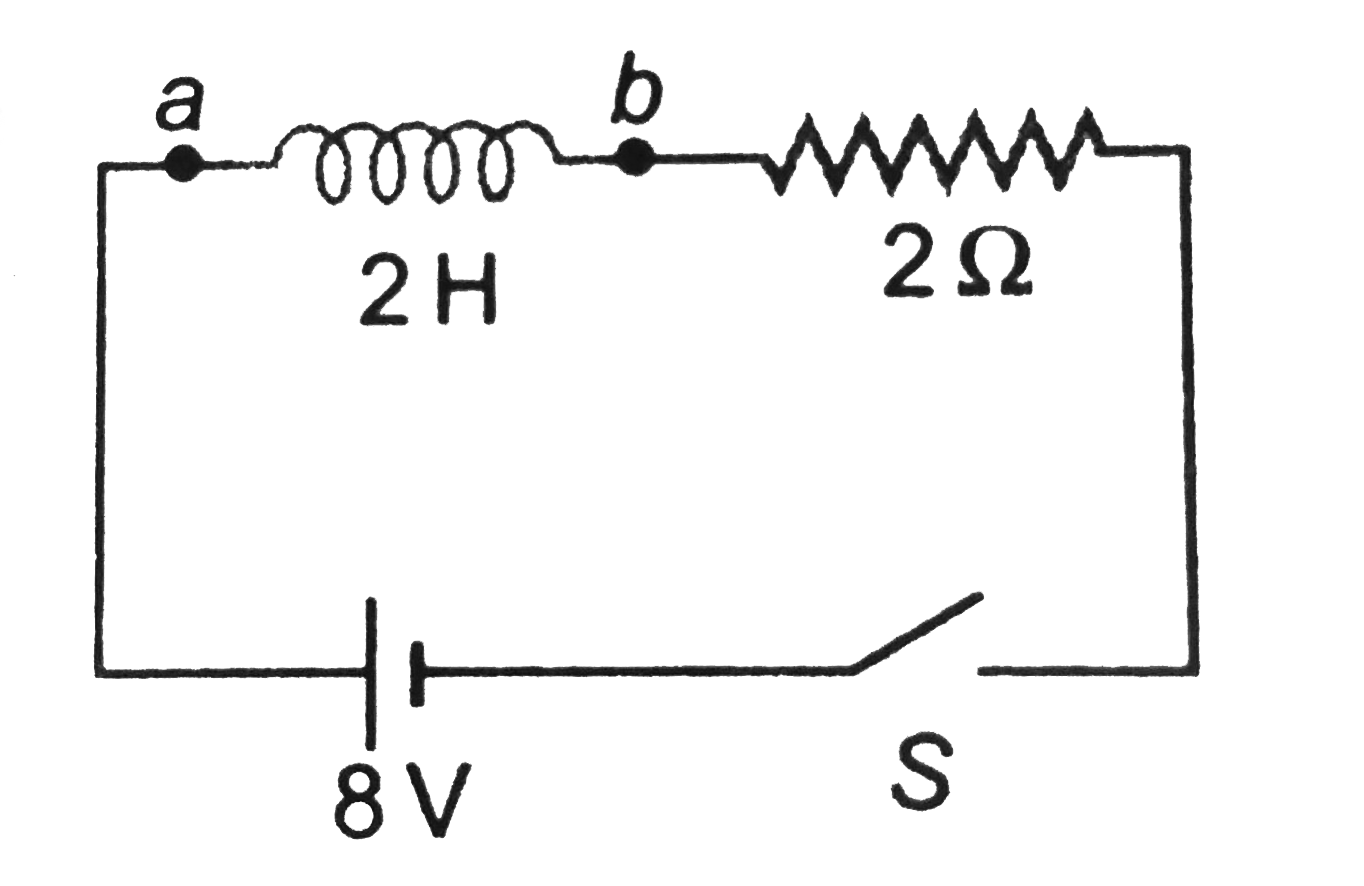In the circuit shown in figure q varies with time t as . Here q is in coulomb and t in second.

Find
50 V
35.5 V
46.5 V
40.2 V
The correct Answer is:C
Step by step video & image solution for In the circuit shown in figure q varies with time t as q=(16t^(2)). Here q is in coulomb and t in second. Find V_(ab) "at" t=5s by Physics experts to help you in doubts & scoring excellent marks in Class 12 exams.
Similar Questions
In the circuit shown in figure q varies with time t as q=(16t2). Here q is in coulomb and t in second.

Find Vab=(Va−Vb)att=3sView SolutionIn the circuit shown, charge q varies with time 't' as q=t3−t2+4t, where q is in coulombs and time 't' is in second. Find VAB(VA−VB) in volts at time t=1 sec
 View Solution
View SolutionIn the figure shown q is in coulomb and t in second. At time t=1s
 View Solution
View SolutionIn the circuit shown in figure, circuit is closed at time t=0. At time t=ln(2) second
 View Solution
View SolutionThe velocity v of a body moving along a straight line varies with time t as v=2t2e−t, where v is in m/s and t is in second. The acceleration of body is zero at t =
View SolutionThe speed of a particle moving in a circle of radius r=2m varies with time t as v=t2, where t is in second and v in m/s. Find the radial, tangential and net acceleration at t=2s.
View SolutionA particle is moving along x-axis. Its X-coordinate varies with time as, X=2t2+4t−6 Here, X is in metres and t in seconds. Find average velocity between the time interval t=0→t=2s.
View SolutionA particle is rotates in a circular path of radius 54m with varying speed v=4t2 . Here v is in m/s and t inn second . Find angle between velocity and accelearation at t=3s .
View SolutionAn object moves along x-axis such that its position varies with time according to the relation x=50t−5t2
Here, x is in meters and time is in seconds. Find the displacement and distance travelled for the time interval t = 0 to t = 6 s.View SolutionAcceleration of a particle in x-y plane varies with time as a=(2tˆi+3t2ˆj)m/s2 At time t=0, velocity of particle is 2m/s along positive x direction and particle starts from origin. Find velocity and coordinates of particle at t=1s.
View Solution


